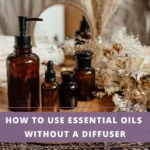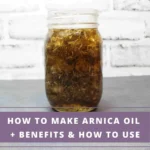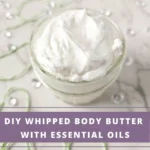As an Amazon Associate I earn from qualifying purchases. See Full Disclosure Here
The best pulse points for essential oils include areas of the body where the major arteries lie closest to the skin’s surface.
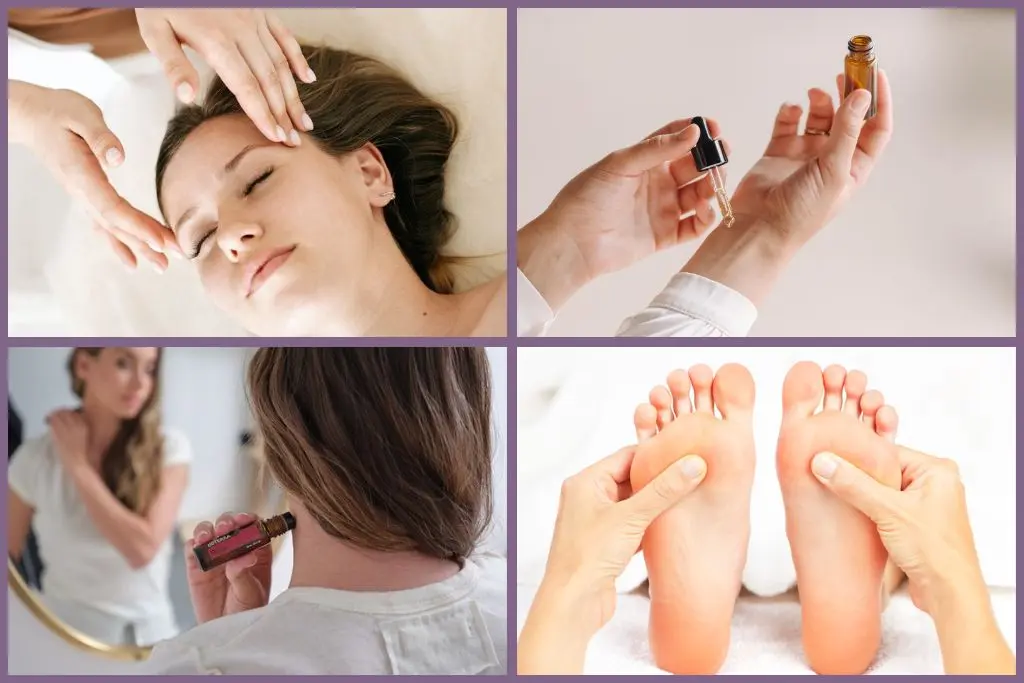
The proximity to the arterial blood flow to the skin allows the essential oils to be absorbed into the bloodstream more quickly and efficiently than anywhere else in the body.
This gives you faster relief when you use essential oils topically.
Table of Contents
Why Apply Essential Oils To Pulse Points?
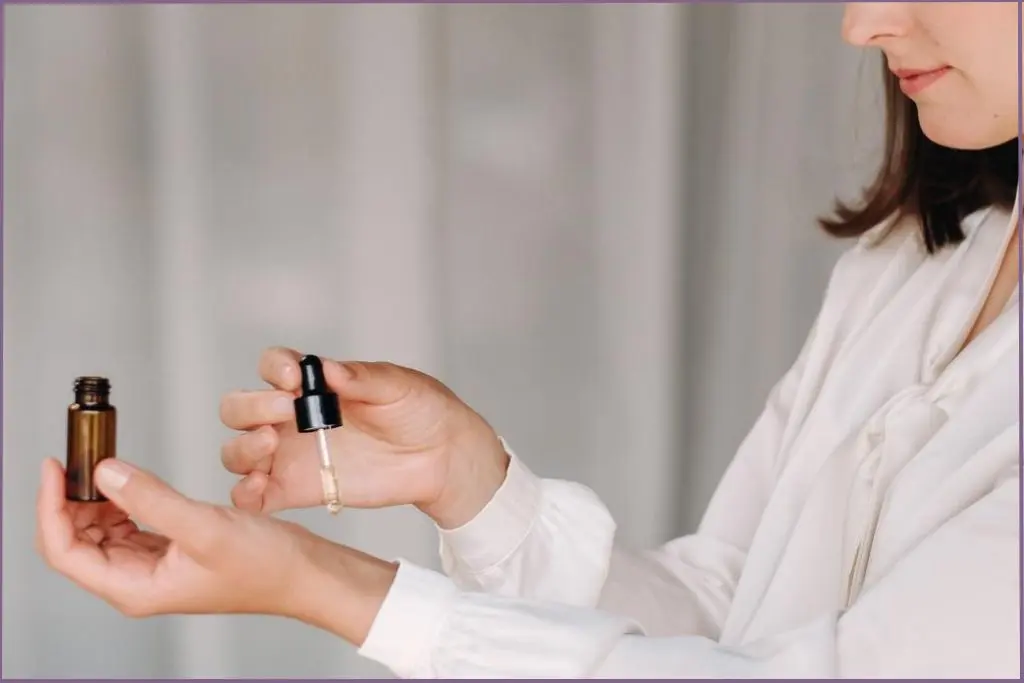
Essential oils possess potent properties that can positively impact our physical, mental, and emotional health.
To experience their full therapeutic potential, it helps to understand the strategic application of these essential oils.
Pulse points, which are specific locations on the body with a high concentration of blood vessels, serve as gateways for rapid absorption.
Applying essential oils to these pulse points accelerates their delivery to the blood stream, enhancing their effectiveness.
The specific essential oils that you use will depend on your desired outcome.
Looking to relax? Lavender and chamomile essential oils are excellent options.
Need a boost of energy? Peppermint and lemon essential oils can invigorate your senses.
No matter what benefit you’re looking for, essential oils get absorbed into the bloodstream faster when applied to recognized pulse points. This allows their therapeutic benefits to take effect faster.
The key to getting the fastest results is knowing which essential oil to use and the best pulse point for the desired outcome.
If you’ve ever wondered where to apply essential oils for headache relief or where to apply essential oils for immunity, you’ll find the answers below.
The three most important things to understand when using essential oils topically are:
1. Which essential oil to use for a specific purpose
2. How to dilute essential oils for topical applications
3. The best pulse points for essential oils
I’ve covered all three aspects in detail, starting with the best pulse points for aromatherapy. Scroll below for more details related to dilutions and the best essential oils for pulse points.
7 Best Pulse Points For Essential Oils
1. Temples
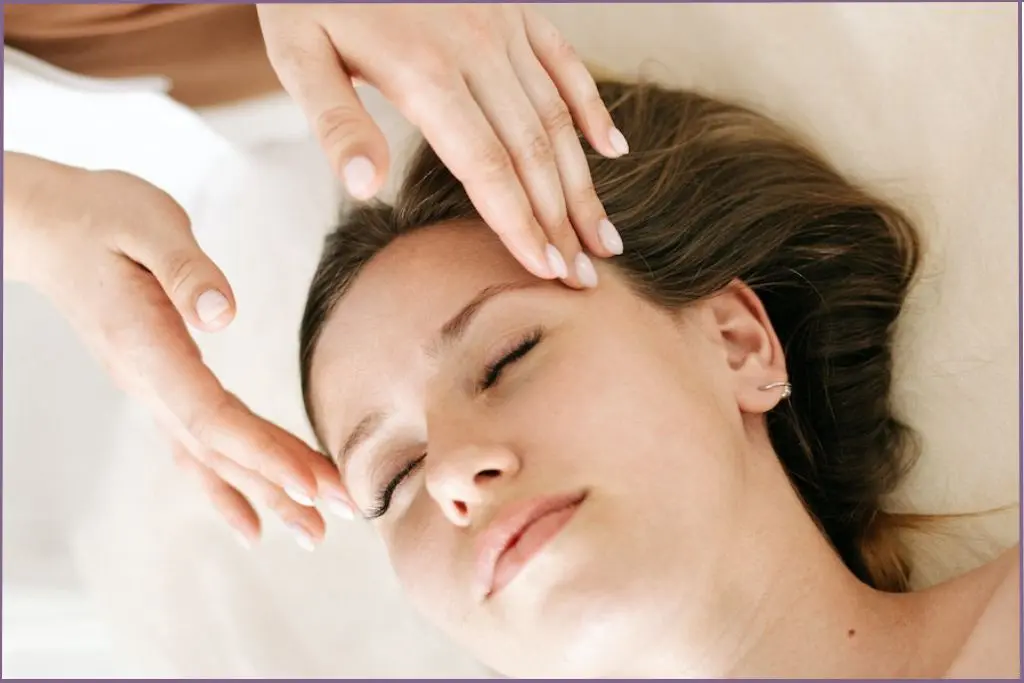
The temples are the best pulse points for essential oils for a number of reasons.
The temples are located on the sides of the forehead. When essential oils are applied to the temples, their aromatic molecules easily and quickly reach the limbic system in the brain, through inhalation and skin absorption.
The limbic system, which lies near the temples and ears, is the brain’s emotional center. It plays a key role in processing emotions, memories, and sensory information.
Other factors also come together to help essential oils at the temples get absorbed into the skin and reach the limbic system faster.
The temporal artery lies close to the surface of the skin at the temples. The relatively thin skin on the temples makes it even easier for the temporal artery to absorb the oils’ therapeutic compounds and distribute them to the brain and other parts of the body more efficiently.
The swift absorption and interaction between the aromatic compounds of essential oils and the limbic system exert a positive effect on emotions, mood, and mental well-being promptly.
Applying essential oils to both temples is an easy and practical way to relax your mind and facilitate a sense of calm and balance.
The temples are the best pulse point for essential oils to relieve headaches, anxiety, and stress, promote sleep, and boost mental clarity.
Recommended Oils: Headache-relieving oils like Peppermint and Eucalyptus, or focus-enhancing oils like Rosemary and Lemon.
Recommended Reads:
Best essential oils for headaches
Best essential oils for anxiety
Best essential oils for sleep
2. Ends Of The Jawline Behind The Ears
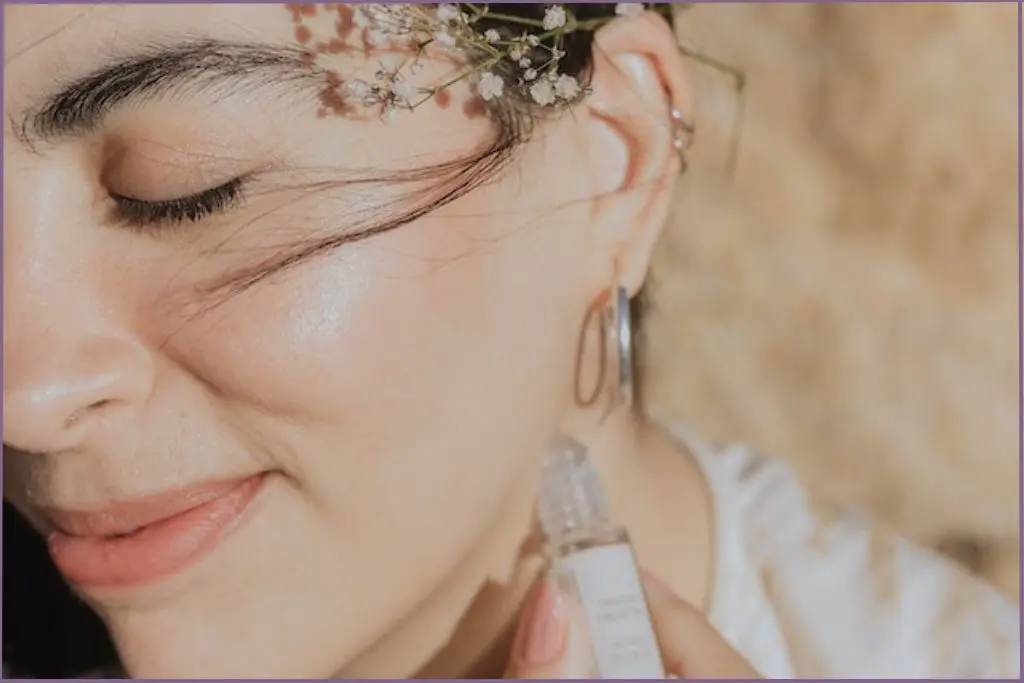
The end of the jawline just behind the earlobes also tops the list of best pulse points for essential oils due to its proximity to the carotid artery, one of the major blood vessels in the body.
The carotid artery is responsible for supplying oxygenated blood to the brain, making it a crucial pathway for maintaining proper brain function and overall well-being.
When essential oils are applied to the pulse points along the jawline and behind the ears, their aromatic molecules come into close contact with the carotid artery, facilitating rapid absorption into the bloodstream.
This swift absorption allows the active compounds within the essential oils to be efficiently transported throughout the body, including the brain, where they can elicit various therapeutic effects.
Moreover, the skin in these areas is relatively thin and has a good blood supply, which further enhances the absorption of essential oils. As a result, the fragrance of the essential oils lingers on the skin, providing a sustained and enjoyable aromatic experience.
The ends of the jawline behind the ears are the best pulse points for essential oils to improve sleep and reduce anxiety and stress.
Recommended Oils: Stress-relieving oils like Frankincense and Clary Sage, or refreshing oils like Peppermint and Eucalyptus for a quick pick-me-up.
3. Inner Wrists

The radial artery runs along the inner side of the forearm, extending from the elbow to the base of the thumb. It lies just beneath the skin’s surface and is visible at the inner wrist area as a distinctive blue or purple vein.
The skin on the inner wrist area is very thin, allowing the radial artery to absorb the aromatic compounds of the oil and disseminate them throughout the body quickly and efficiently.
The inner wrists naturally emit body heat and have a characteristic scent of their own, which helps blend the applied essential oils with your natural body scent. This synergistic interaction creates a unique and personalized aroma, making the experience more pleasant and enjoyable.
By simply lifting your wrists to your nose, you can inhale the scent of the applied essential oils, enhancing the aromatherapy experience and allowing you to benefit from the therapeutic properties of the oils through inhalation as well as topical application.
The inner wrists are the best pulse points for essential oils for boosting mood, easing anxiety, and lowering stress levels.
When you’re feeling particularly anxious or stressed, lifting your wrist to your nose and inhaling the aroma can help restore your sense of balance so you can get on with your day.
Recommended Oils: Calming oils like Lavender and Chamomile, as well as uplifting oils like Bergamot and Ylang-Ylang.
4. Inside of the elbows
The inside of the elbows contains a high number of blood vessels close to the surface. Moreover, the skin in this area is relatively thin, resulting in a stronger pulse sensation.
This pulsating blood flow assists in the dispersion of the aromatic molecules from the essential oils, leading to effective diffusion and a more pronounced aroma.
The oils also permeate the skin and enter the bloodstream rapidly, enabling their therapeutic properties to take effect efficiently.
Recommended Oils: Balancing oils like Geranium and Clary Sage, or immune-boosting oils like Tea Tree and Lemon.
5. Chest
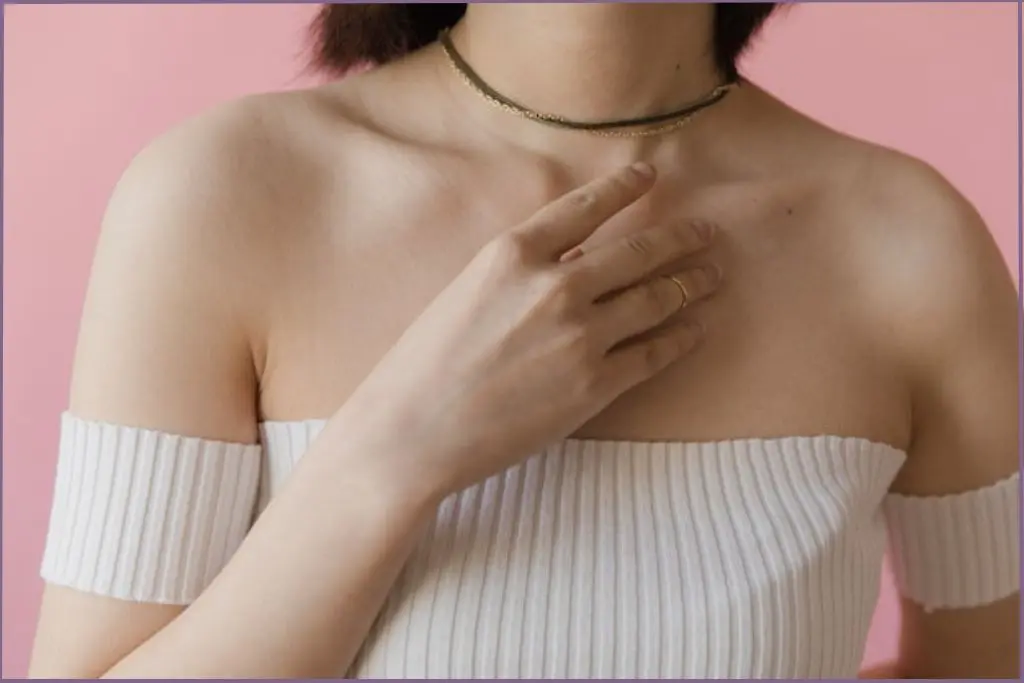
The chest area is home to vital organs such as the heart and lungs, which are central to the respiratory and cardiovascular systems.
When essential oils are applied to the chest, the aromatic molecules can be inhaled, benefiting the respiratory system.
Additionally, the chest’s proximity to the heart allows for efficient absorption of the oils into the bloodstream, facilitating their circulation throughout the body.
Applying essential oils to the chest allows for easy inhalation of their aromatic vapors. This inhalation is particularly beneficial for addressing respiratory issues like congestion or promoting relaxation and mental clarity.
As you breathe, the aromatic compounds interact with the respiratory system and reach the olfactory receptors, providing both physiological and emotional benefits.
The act of gently massaging the oils onto the chest area allows for a moment of self-care and mindfulness. The action creates a sense of comfort and relaxation, making it an excellent addition to relaxation practices such as meditation or deep breathing exercises.
The chest is the best pulse point for essential oils for congestion and blocked sinuses.
Eucalyptus and peppermint are the best essential oils for this purpose.
Applying Rose or Neroli to the chest can help boost confidence.
Recommended Reads;
Best essential oils for colds
6. Solar Plexus
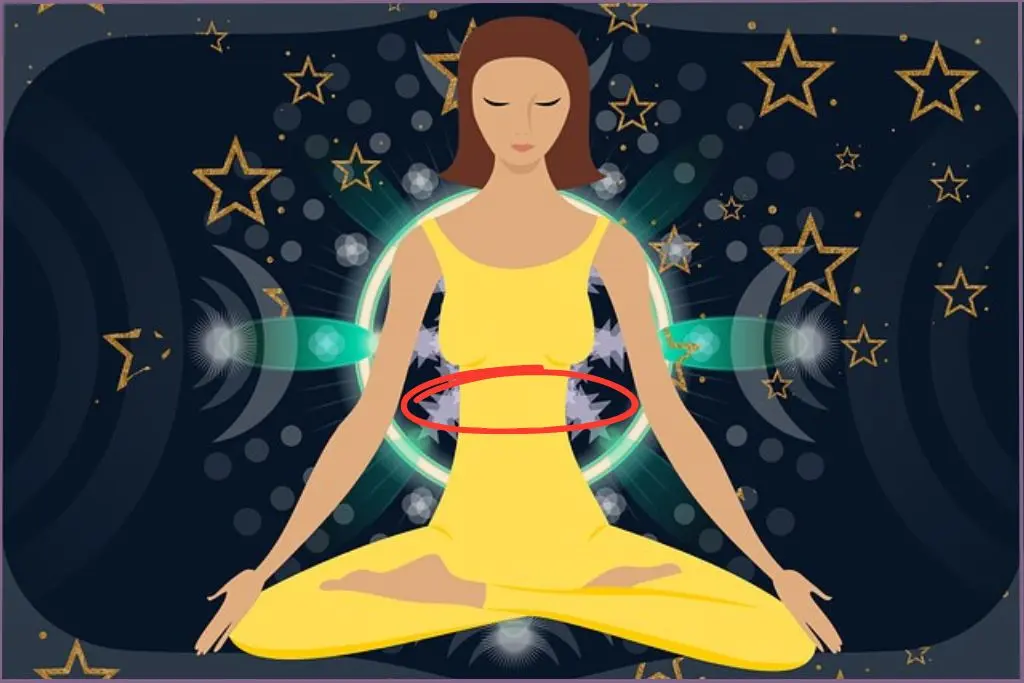
The solar plexus is a complex network of nerves located in the upper abdomen.
It is often referred to as the body’s emotional center because it is connected to the autonomic nervous system, which regulates various bodily functions, including digestion and stress responses.
Applying essential oils to the solar plexus area can have a calming and balancing effect on emotions, helping to reduce anxiety and promote a sense of emotional well-being.
Sandalwood, Rose, Frankincense, Patchouli, and Vetiver are the best essential oils to apply to the chest area for centering yourself and staying calm and balanced.
7. Feet
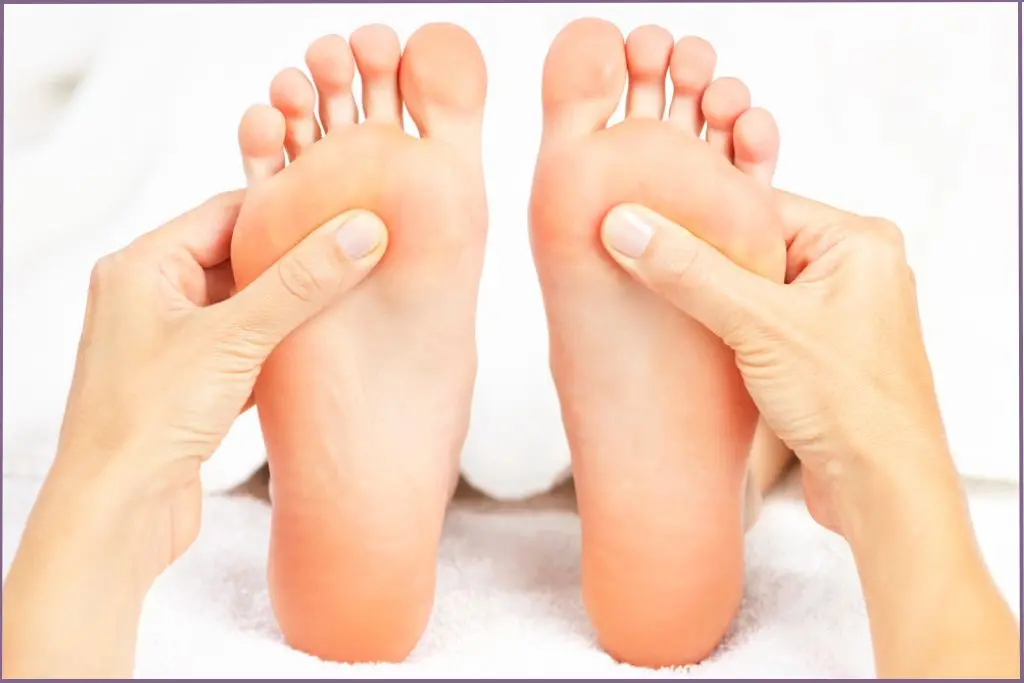
The feet are excellent pulse points for essential oils due to their unique characteristics and their connection to various reflexology points and nerve endings in the body.
Reflexology is based on the belief that specific areas of the feet correspond to various organs, glands, and body systems. By applying essential oils to these reflexology points, you can potentially stimulate and support the corresponding areas of the body.
For example, massaging essential oils on the balls of the feet is thought to affect the heart and chest area, while the heels are associated with the lower back and sciatic nerves.
The soles of the feet also have an extensive network of nerve endings, making them highly sensitive to touch and stimulation. When essential oils are applied to the feet, the nerve endings help facilitate absorption and the transmission of the oils’ therapeutic properties to various parts of the body.
The skin on the soles of the feet is relatively thick, which may slow down the absorption of essential oils compared to other pulse points like the wrists or temples. However, the feet still offer effective absorption, and applying oils before bedtime allows for longer exposure as you rest.
Giving yourself a foot massage with essential oils can induce a deep sense of relaxation and grounding. The act of massaging the feet promotes relaxation throughout the body, which can be especially beneficial for reducing stress and promoting restful sleep.
Whether for relaxation, immune support, or general well-being, incorporating the feet as a pulse point for essential oils offers a versatile and effective approach to experiencing the benefits of aromatherapy.
Recommended Read: Best essential oils for immune system support
Best Pulse Points For Specific Concerns
Here’s a quick recap of the best pulse points depending on the outcome you’re looking for.
Anxiety – Jawline behind the ears, inner wrists, temples
Sleep – Inside of elbow, inner wrists
Headaches & Hangovers – Temples
Pain Relief – Massage directly at the painful area, temples
Stress Relief – Jawline behind the ears, inner wrists
Cold & Congestion – Chest
Digestion – Solar plexus
Immune System – Wrist, solar plexus, feet
How To Apply Essential Oils To Pulse Points: Application Techniques
There are three main techniques for applying essential oils to pulse points:
1. Dabbing Method: Place a drop or two of the diluted essential oil onto your fingertip and gently dab it onto the pulse point. Avoid rubbing the oil in too vigorously to prevent excessive evaporation.
2. Gentle Massage: Take a small amount of diluted essential oil mixture and apply it to your pulse points. Massage the oil into the skin using light circular motions, allowing the aromatic molecules to absorb into your bloodstream. The key is to keep the movements light and gentle.
3. Use A Roll-On: A roll-on bottle is an easy and mess-free way to apply essential oils to pulse points. Roll-ons contain pre-diluted essential oil and are practical to carry everywhere you go. When necessary, simply roll the roller point over the pulse point a few times to disperse the oil.
Whether you choose to dab, massage, or use a roll-on bottle over your pulse points for essential oil applications, here are a few important things you need to know.
Benefits of Applying Essential Oils Topically to Pulse Points
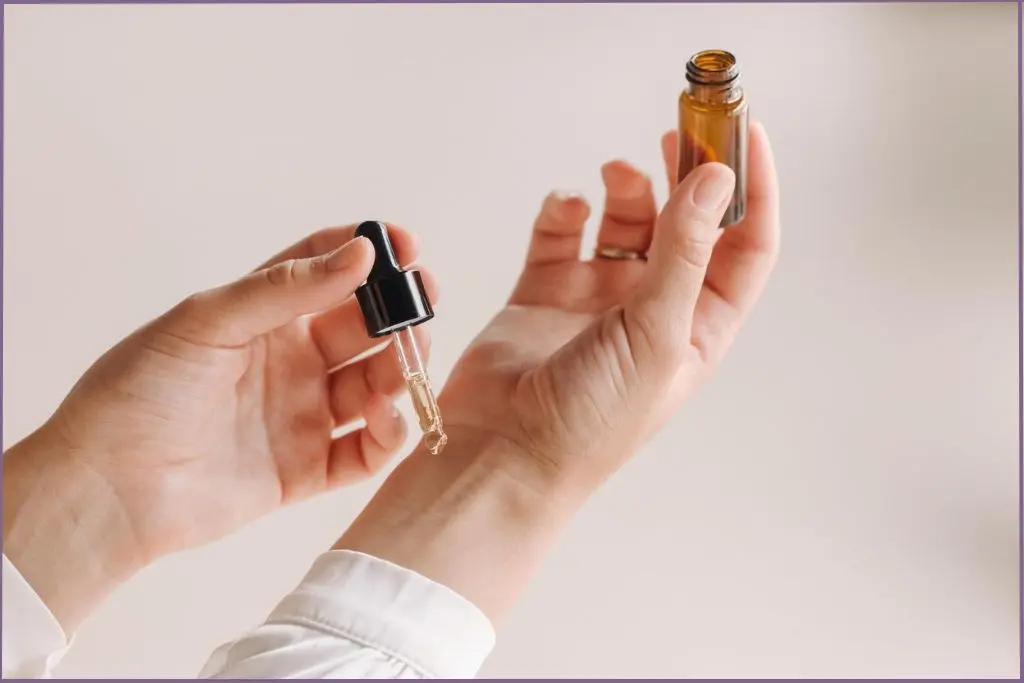
Applying essential oils topically to pulse points is a more practical option at certain times and for certain outcomes.
For example, you may not be able to carry a diffuser with you everywhere. But a pre-diluted roll-on is easy to keep in your purse and apply discreetly whenever you want to.
Understanding the best pulse points for essential oils will also help you get faster and more targeted relief for specific concerns. For example, applying diluted essential oils to the temples can help relieve headaches and mental fatigue fast.
By applying essential oils to pulse points, you also create a more intense and personalized aromatherapy experience. Besides, the warmth and constant movement of these areas release the aromatic compounds of the oils slowly. This allows you to enjoy a continuous and gentle diffusion of the fragrance around you everywhere you go.
From convenience and target relief to rapid absorption and enhanced aromatherapy experiences, understanding the best pulse points for essential oils will unlock the full potential of aromatherapy.
Precautions When Applying Essential Oils to Pulse Points
1. Always dilute essential oils with a carrier oil before topical application
Essential oils are highly concentrated. Applying them to the pulse points directly can cause skin irritation or sensitivity.
To prevent this, you must dilute essential oils with a carrier oil such as jojoba, coconut, or sweet almond before applying them to your skin. These are the best carrier oils for essential oils.
This ultimate guide to diluting essential oils includes details of the correct ratios to use and other safety precautions.
2. Use Only High-Quality Essential Oils
Selecting premium, pure essential oils is crucial for a successful aromatherapy experience.
Look for oils that are sourced from reputable brands and have undergone rigorous testing to ensure their authenticity and therapeutic quality.
Avoid synthetic or adulterated oils, as they may not offer the desired therapeutic effects and can even cause skin irritation.
My Top Two Essential Oil Brands:
Plant Therapy
3. Perform a Patch Test
Before applying any essential oil to larger areas of the skin, it’s essential to conduct a patch test.
Dilute a small amount of the essential oil in a carrier oil (such as coconut, almond, or jojoba oil) and apply it to a small patch of skin on your forearm. Wait for 24 hours to check for any signs of irritation or allergic reactions. If no adverse reactions occur, the oil is likely safe for use.
Always start with a small amount of essential oil and gradually increase the amount as needed.
4. Be Mindful of Sensitivities
While essential oils can offer numerous benefits, some people may be more sensitive to certain oils than others.
If you experience any irritation or discomfort after application, discontinue use immediately and wash the area with mild soap and water.
5. Don’t Apply Essential Oils to Broken or Irritated Skin
It’s best to only use unscented, medicated creams and lotions on broken or irritated skin. Applying any scented oil or cream may aggravate the area and delay the healing process.
6. Consult with a healthcare professional
This is especially important if you have any underlying medical conditions or are pregnant or breastfeeding.
Recommended Reads:
Essential Oil Safety Guidelines – 15 Tips
You may also be interested in:
How many drops in 10ml essential oil? Get all the conversions from drops to ml, ounces, and teaspoons.


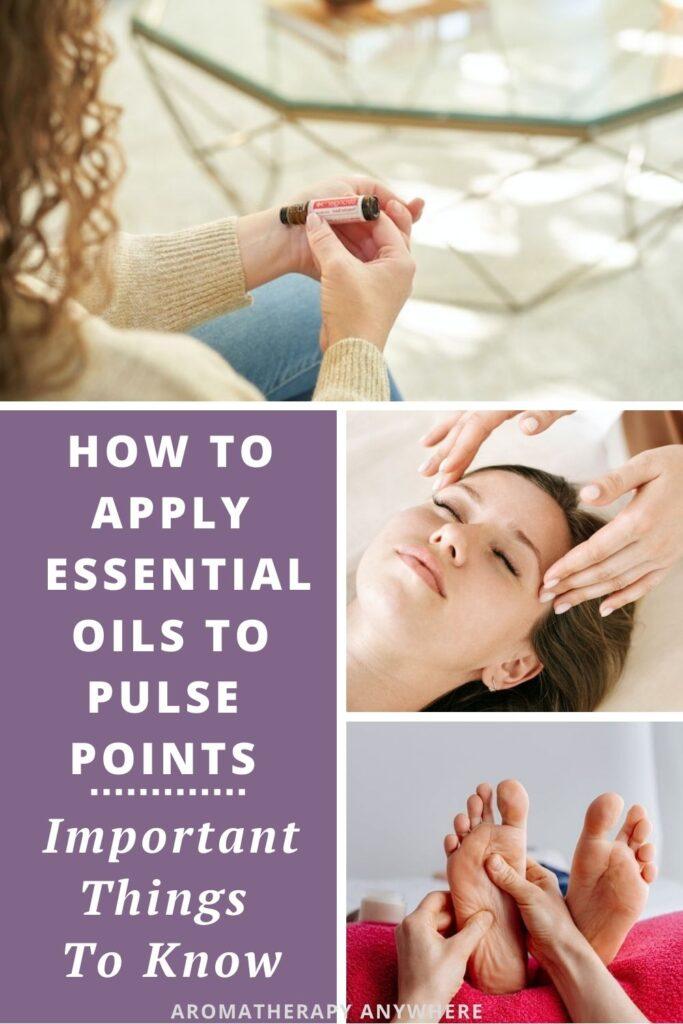
Disclaimer: This information is not intended to serve as medical advice. Please consult your doctor before using any natural medication or if you experience any unusual symptoms. See Full Disclaimer here.

